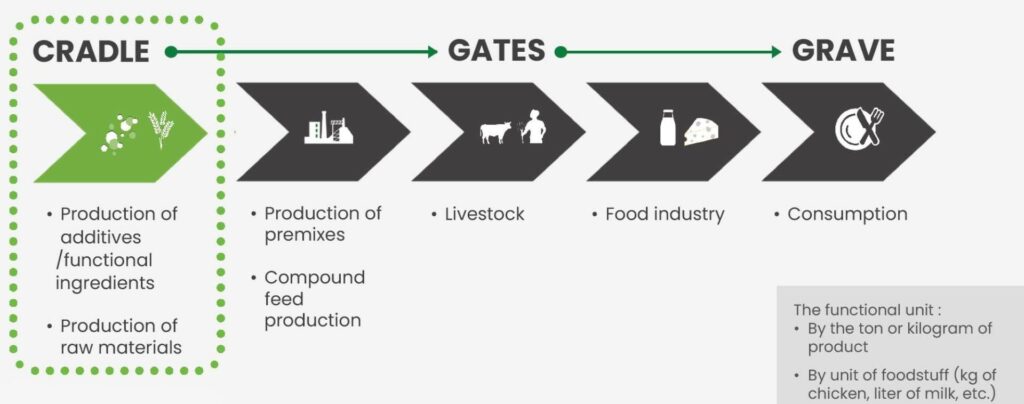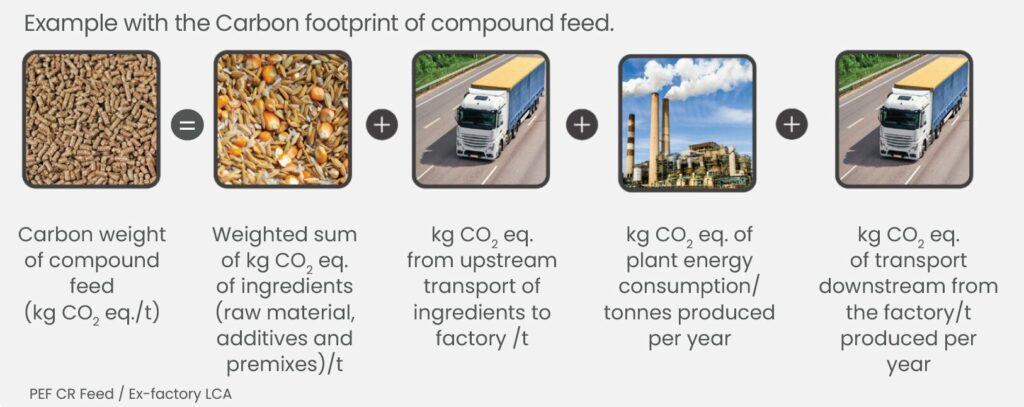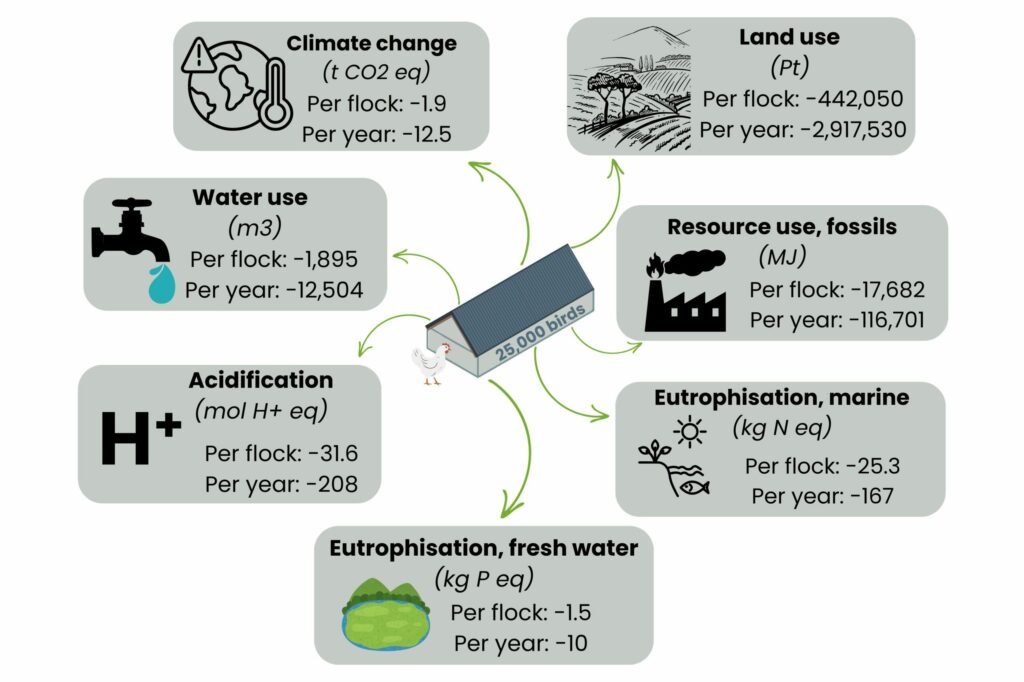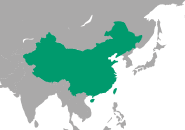Life Cycle Assessment (LCA) in animal feed: How to Evaluate the Environmental Footprint of a Product?
Governments have committed to reducing the environmental footprint of human activities.
For agriculture, animal nutrition is recognized as an important lever to reduce the environmental carbon footprint of livestock farming. In the Paris Climate Agreement (COP21) signed in 2015, the main objective is to limit the increase in the average temperature at the Earth’s surface of 1.5°C. These objectives require a significant reduction in greenhouse gas emissions.
What is LCA?
Life Cycle Assessment (LCA) is a standardized method (ISO 14040-14044) that evaluates the environmental impacts of a product or service throughout its life cycle, from raw material extraction to end of life (“cradle to grave”).
Why use LCA in Animal Nutrition?
LCA provides valuable insights into the environmental impact of animal feed, allowing producers to make informed decisions that balance performance, sustainability, and regulatory compliance:
- To optimise the formula
- Raw material selection based on environmental impact
- Balance between environmental impact and nutritional performance
- Identification of more sustainable alternatives
- To improve the process
- Energy efficiency assessment
- Transport and storage optimization
- Waste and loss reduction
- To support communication & marketing actions
- Environmental transparency
- Product differentiation
- Meeting consumers’ expectations
- To support the regulatory approach
- Anticipation of future regulations
- Environmental standards compliance
- Environmental performance documentation
What are the impact categories considered in the environmental footprint?
The most closely monitored criterion is the Carbon footprint (ie Climate Change) expressed in kg CO2-eq, but there are 16 main criteria in total:
- Climate change
- Acidification
- Human toxicity (cancer effect)
- Human toxicity (non-cancer effect)
- Particulate matter
- Ionising radiation
- Ozone depletion
- Photochemical ozone formation
- Eutrophication: terrestrial
- Eutrophication: freshwater, marine
- Ecotoxicity (freshwater)
- Land use
- Water use
- Resource use: minerals, and metals
- Resource use: fossils
Scope of LCA
The frame of the study must be clearly defined. For example, a feed additive manufacturer can produce ex-factory LCA for their products (up to loading platform at the factory).
The frame of the study has to be clearly defined. As an example below, a feed manufacturer that produces ex-factory LCA for their products (up to loading platform at the factory).

What are the steps involved in calculating the environmental footprint?

Using LCA, companies can better understand and reduce the environmental footprint of their products, meet consumer expectations, and comply with regulations. FEF CR Feed / Ex-factory LCA
What is the role of Life Cycle Assessment (LCA) in farming?
Life Cycle Assessment (LCA) is a systematic method used to evaluate the environmental impacts associated with all stages of a product’s life, from raw material extraction to disposal. In farming, LCA serves as a critical tool to assess and quantify the environmental footprint of agricultural practices. By analyzing factors such as energy consumption, greenhouse gas emissions, water usage, and land use, LCA helps identify areas where environmental impacts could be reduced, thereby promoting more sustainable agricultural systems.
How does LCA help in reducing the carbon footprint in animal nutrition?
In animal nutrition, LCA is employed to assess the environmental impact of feed ingredients throughout their entire life cycle, including cultivation, processing, transportation, and utilization. This comprehensive analysis enables the identification of feed components that contribute significantly to greenhouse gas emissions. By pinpointing these areas, producers can reformulate animal diets to incorporate more sustainable ingredients, optimize feed conversion ratios, and implement environmentally friendly processing methods. Such strategies effectively reduce the overall carbon footprint associated with animal nutrition.
What are the main environmental impact categories in animal feed production?
The primary environmental impact categories evaluated in animal feed production through LCA include:
- Climate Change (carbon footprint): Emissions of greenhouse gases such as CO₂, CH₄, and N₂O resulting from feed production processes.
- Land Use: The amount of land required for cultivating feed crops, which can lead to deforestation and habitat loss.
- Water Use: The volume of water consumed in the irrigation of feed crops and processing of feed ingredients.
- Eutrophication: Nutrient runoff from fertilizers used in feed crop cultivation that can cause water bodies to become nutrient-rich, leading to algal blooms and oxygen depletion.
- Acidification: The release of acidic compounds into the environment, often from ammonia emissions during manure management, affecting soil and water quality.
Assessing these impact categories allows for a comprehensive understanding of the environmental footprint of animal feed production and aids in developing strategies to mitigate adverse effects.

Life Cycle Assessment (LCA) is an essential tool for evaluating and reducing the environmental footprint of products and services. By implementing LCA in animal nutrition, companies can optimize formulas and improve processes.
Life Cycle Assessment (LCA) is an essential tool for evaluating and reducing the environmental footprint of products and services. By implementing LCA in animal nutrition, companies can optimize formulas and improve processes.
This global approach not only contributes significantly to global efforts in combating climate change and promoting sustainability enables but also to meet new market expectations .












